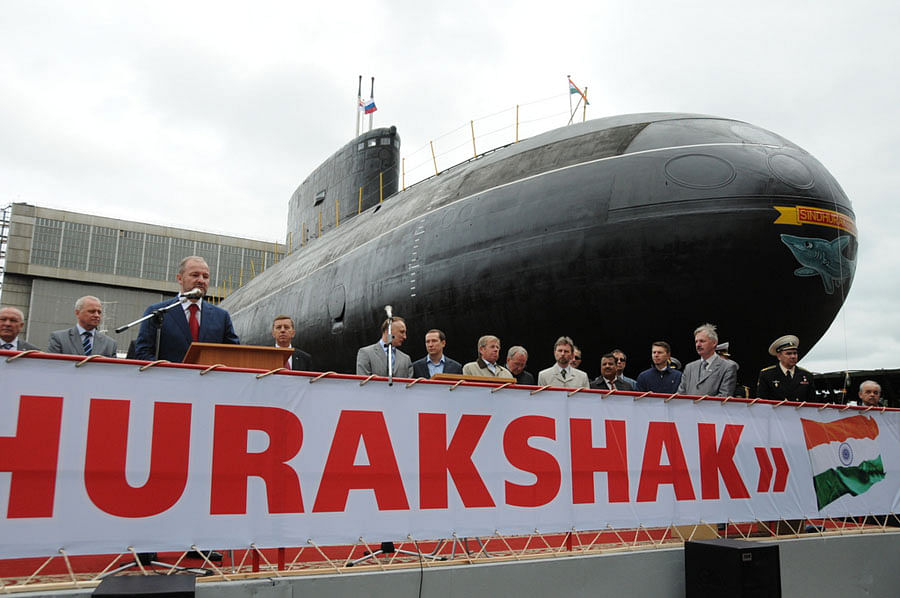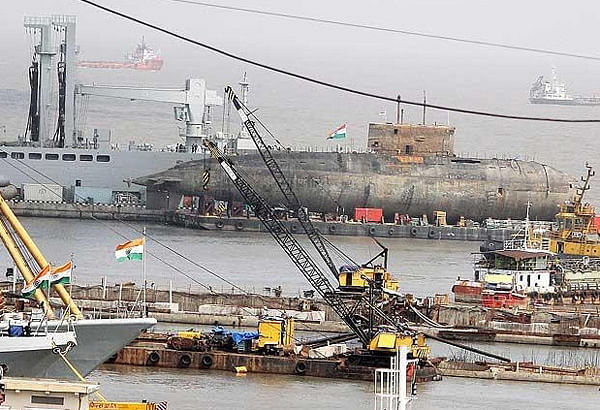Mishap killed 18 crew members onboard the INS Sidhurakshak, a Russian Kilo-class submarine in Mumbai’s Dockyard; probe reports are marked ‘classified’.
New Delhi: Five years ago, India suffered its biggest peacetime military loss: The navy’s submarine, the INS Sindhurakshak, exploded and sank in Bombay’s Naval Dockyards.
Five years on, little is known about what happened when 18 of its crew were preparing the boat for a patrol. The Board of Inquiry reports of the navy are classified.
India’s single biggest wartime military loss was also the navy’s: In 1971, the INS Khukri was torpedoed and sunk by a Pakistani submarine, its commanding officer, Captain Mullah gallantly going down smoking a cigarette along with the rest of the crew and the ship.
At least the cause for the loss of the Khukri is known.
Also read: Indian Army chief wants to revolutionise the military — by cutting manpower
Residents living in high-rises in south Mumbai’s Colaba area heard the blast that caused the Sindhurakshak to sink on the night of 14 August, 2013.
Subsequently, the Indian Navy floated a tender to salvage the submarine. Last July, the carcass of the Sindhurakshak was put on a pontoon, towed away by a tugboat miles out to sea where Marine Commandos (Marcos) detonated explosive devices on it and gave it a burial. The wreck is now 3,000 feet under the sea.
The submarine

The INS Sindhurakshak was commissioned into the Indian Navy in December 1997. India had bought the conventional diesel-electric submarine in 1997 for $113 million, which was later upgraded for $156 million. The submarine carried 16 warheads, a combination of SUT Torpedoes and Klub missiles.
The accident can be vaguely compared to what happened to the Kursk, a nuclear-powered submarine of the Russian Navy that sank in 2000, killing all 118 people on board. While the Kursk was in deep sea, in the middle of an operation when the incident happened, the INS Sindhurakshak sank where she was berthed.
The Sindhurakshak disaster was part of a series of accidents that the Indian Navy had faced around that time. In February 2014, a fire in another Russian Kilo-Class sub — INS Sindhuratna — killed two sailors, 50 nautical miles off Mumbai.
Then Navy chief, Admiral D.K. Joshi, resigned taking responsibility for the incident.
The Indian Navy, at present, just has nine such submarines, reflecting the poor condition of “the silent arm”.
The blast on Sindhurakshak
ThePrint has learnt that there was an explosion in the forward compartment of the submarine loaded with armaments, which caused the ship to sink. The crew members were loading torpedoes and were probably fixing the warheads on the tubes while preparing for a patrol.
Submarines are used to patrol even in peacetime, especially in the wake of incidents such as the 26/11 terror attacks in Mumbai.
Mishandling of equipment and non-adherence to standard operating procedures were believed to have caused the Sindhurakshak incident.
A recent CAG report tabled in Parliament had highlighted the lack of adequate facilities to train naval crew on firefighting and damage control in submarines.
Speaking to ThePrint, former chief of the Western Naval Command, Vice-Admiral Shekhar Sinha (retired), said he was pained to recall the incident where he lost so many of his colleagues.
“It took place under my watch. It was a sad day for all of us,” he said, refusing to divulge details of the accident.
Also read: Modi govt targets shipping sector to solve some of its job creation problems
Former Eastern Naval Command chief Vice-Admiral A.K. Singh said submarines are complex systems operating in dangerous environments. There have seen several such accidents worldwide, including torpedo explosions, he said.
The INS Sindhurakshak, he said, was a fine submarine and he had gone to see her before she was commissioned.
“The lesson to be learnt from such accidents is that the embarkation and storage of weapons should be done with extreme caution. We do not know what exactly happened in case of INS Sindhurakshak since the entire crew died in the accident,” Singh added.




I remember the incident well. Admiral Joshi, a fine officer, tendered his resignation out of a sense as much of weariness as of owning moral responsibility. It was accepted within hours by Raksha Mantri A K Antony who, rightly or wrongly, had come to be seen as someone who valued his self image of probity more highly than the operational requirements of the armed forces. His extended tenure in MoD will not be recalled for great contributions made to his assignment. UPA II was on its last legs, waiting for deliverance at the hustings. The moral of the story is that a government must act with a sense of confidence and purpose till its last day in office.
Did you ever think that young sailors, unsupervised and horsing around or unsupervised loading and unloading torpedos resulted in mishandling of the explosive device, that caused the accident.
This paper throws no light on new investigation, it merely rewrites or cuts and paste facts already known.